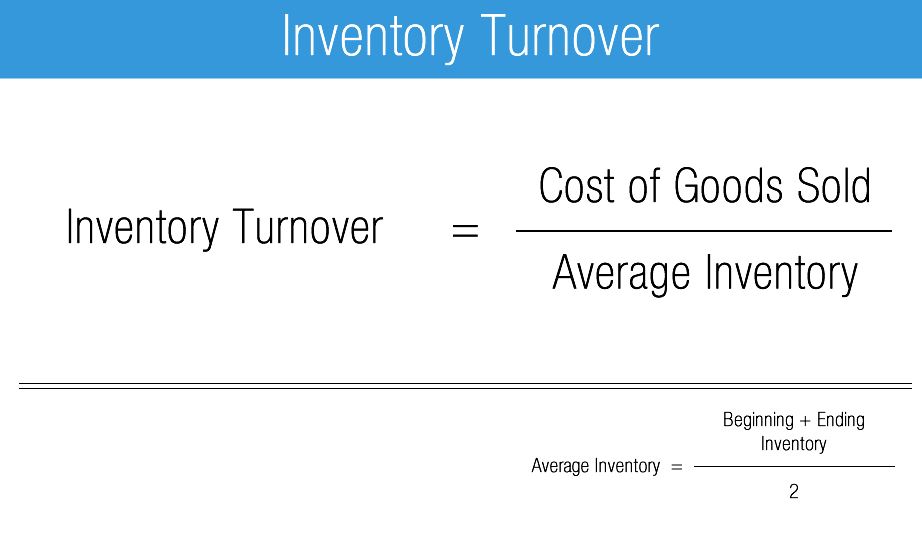

Perhaps you have a company with a low inventory turnover, which means you don’t replenish inventory very often. This means the store is changing the inventory eight times in the given time period. This yields an inventory turnover ratio of eight ($160,000 / $20,000 = 8). Assume the retailer has $160,000 in COGS with $20,000 in average inventory.

Example 2Ī clothing retailer generally has a lower turnover ratio. This is an industry where high turnover ratios are common. That means that the automotive parts store is going through inventory 50 times in the defined period of time. Inventory Turnover Ratio = COGS / Average Inventory Value Example 1Īn automotive parts store has a COGS of $500,000 with an average inventory of $10,000. The information for this equation is available on the income statement (COGS) and the balance sheet (average inventory). This equation will tell you how many times the inventory was turned over in the time period.
#Inventory turns calculation how to
In the next section, you have examples of how to calculate inventory turnover ratios using Google Sheets.Inventory turnover is calculated by dividing the cost of goods sold (COGS) by the average value of the inventory.

In fact, using Excel or Google Sheets together with Layer, you can automate inventory management and control: from initial data collection and synchronization from multiple users to automatically sharing the final reports. Fortunately, tools like Excel and Google Sheets let you create templates to standardize and automate these calculations. In other words, this is not something you should attempt to do manually. By analyzing the data, you can investigate any unexpected values and uncover potential inventory problems. However, you need to recalculate this periodically to make real use of this information. It provides insight into how well a company sells its products and manages its inventory. Use the following formula to calculate the number of days it takes to use up the inventory: average days to sell inventory = 365 / inventory turnover ratio How to Calculate Inventory Turnover in Excel or Google Sheets?Īs you can see, inventory turnover is a useful financial ratio. You can also quickly convert this to obtain the number of days a turn takes. Where average inventory = (beginning inventory - end inventory) / 2 inventory turnover ratio = COGS / average inventory You can use the following formula to calculate inventory turns for a given period of time. You can use whatever timeframe you prefer, but it’s common to use yearly, quarterly, or monthly data. The average inventory can be calculated by adding the beginning and end inventories for the period and dividing by 2. To calculate the inventory turnover ratio, divide the cost of goods sold (COGS) for a given period by the average inventory for that same period. For example, the finance and service sectors have the highest averages for inventory turnover. If you work with intangibles, inventory turnover can be exceptionally high. However, the values themselves change drastically depending on various factors. Generally speaking, higher values are preferred by all interested parties. However, what “high” and “low” means will vary significantly by industry and business model. A low ratio can indicate low sales or overstocking. However, too high a value could indicate a higher likelihood of stock shortages. What is a Good Inventory Turnover Ratio?Ī high ratio indicates that your products sell well since inventory is used quickly. Values calculated using net sales can be significantly and misleadingly higher. When comparing ratio values, remember to check whether they were calculated using the same method. However, the latter is usually preferred, as using the value for COGS provides a more accurate result. There are different methods available to find the inventory turnover ratio, using net sales or cost of goods sold (COGS). This value can also be recalculated so that it is expressed in days. The inventory turnover ratio indicates how many times inventory was replenished during a specific timeframe. Inventory turnover shows how quickly a company uses its inventory.


 0 kommentar(er)
0 kommentar(er)
